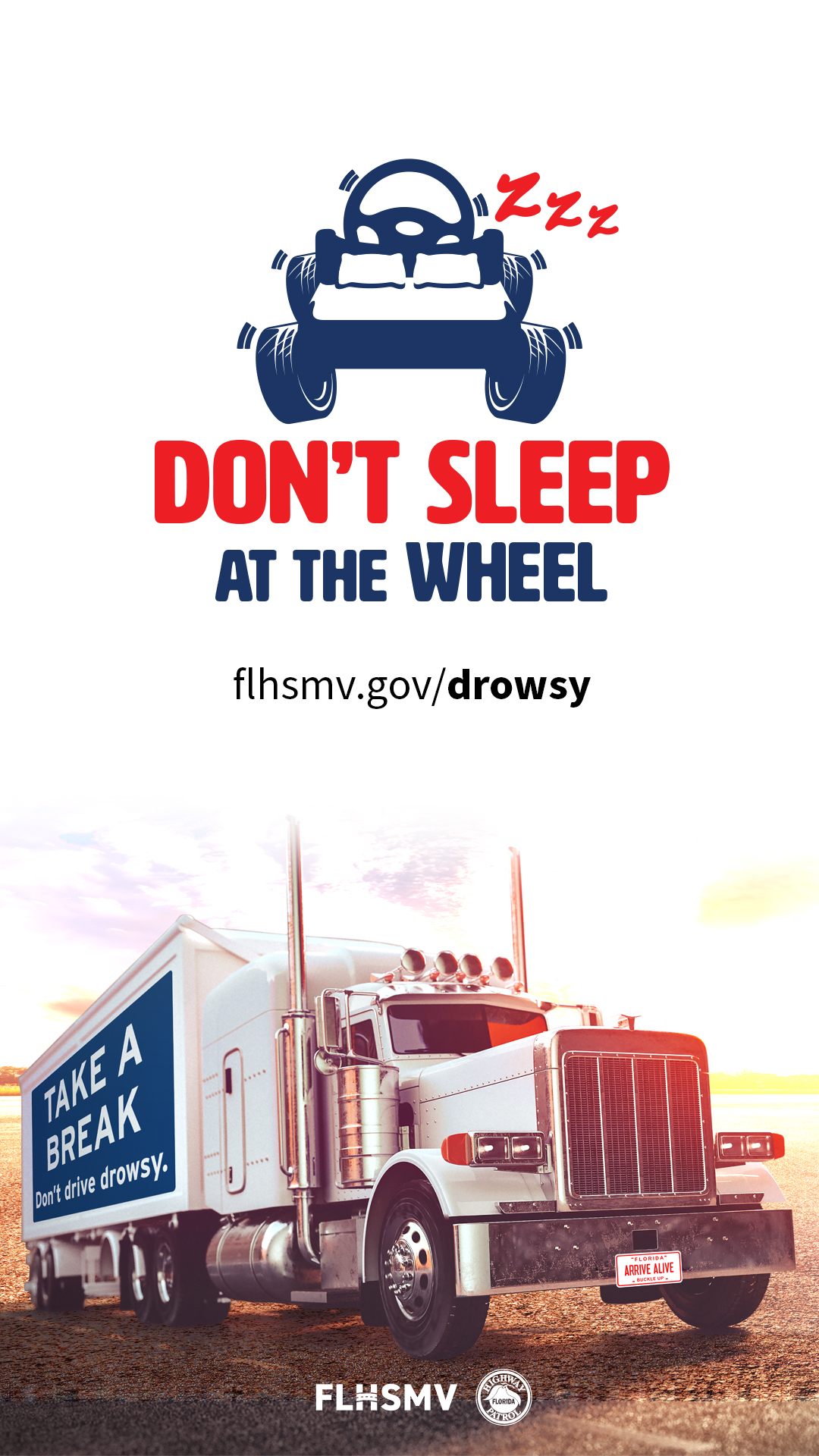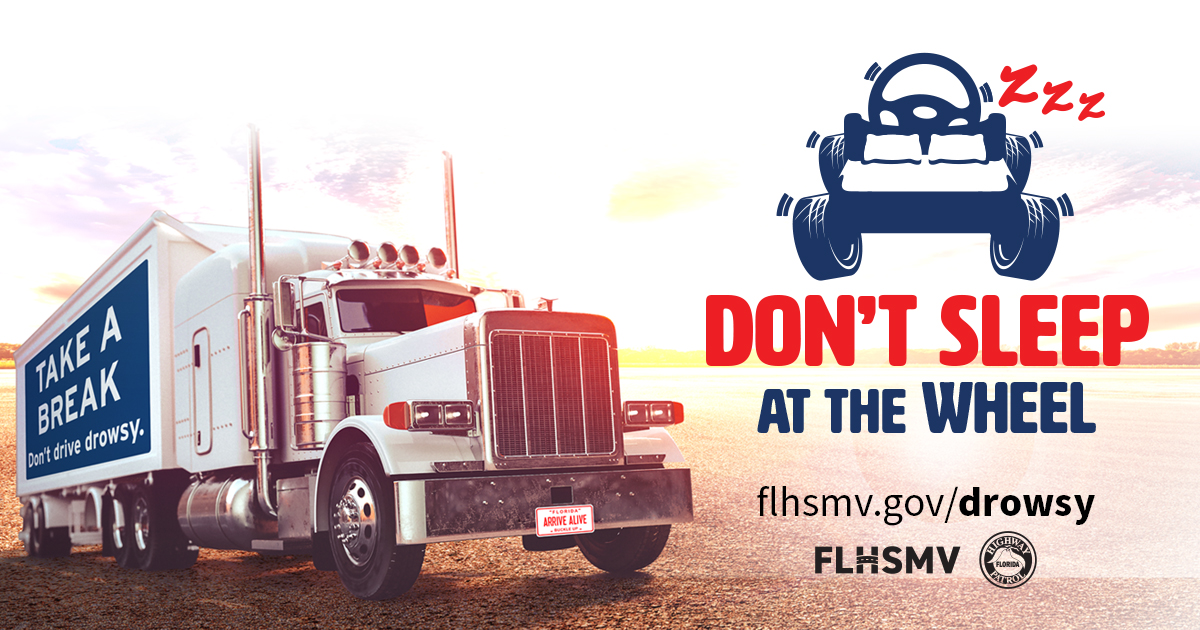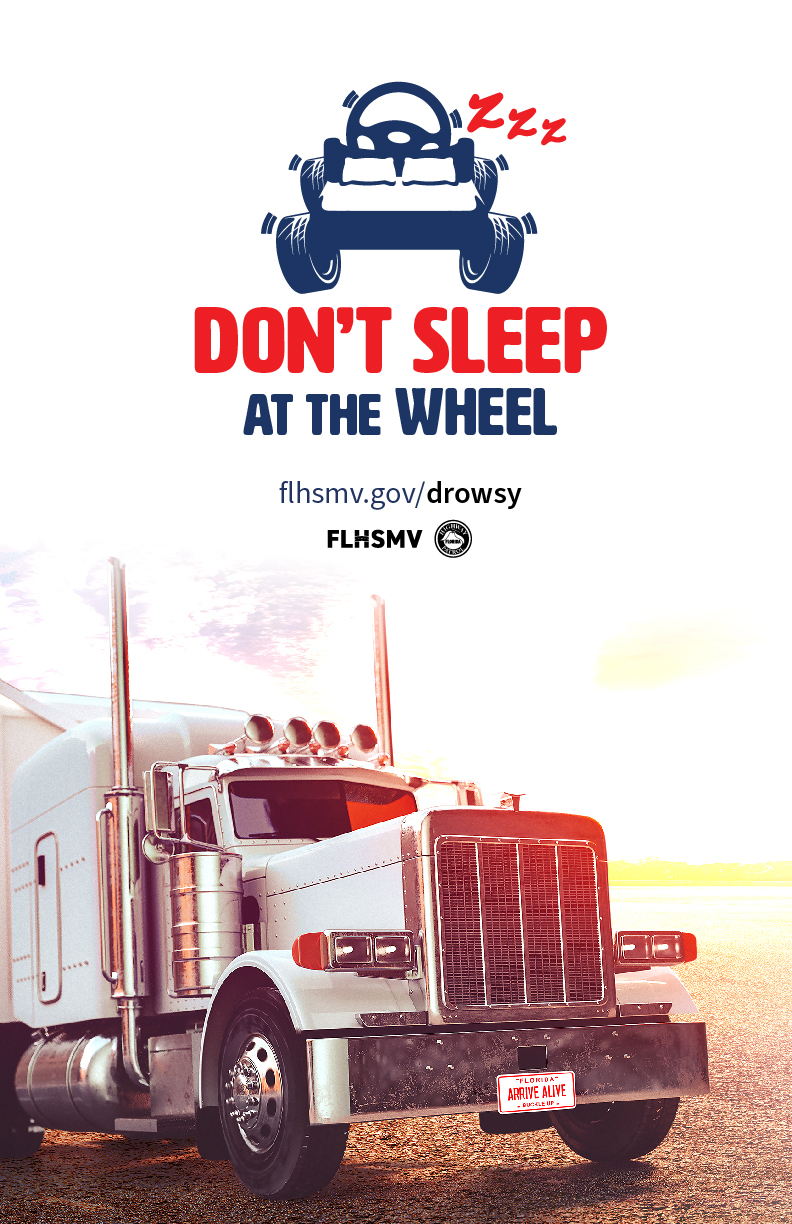Driving Safety
Drowsy Driving Prevention

Getting behind the wheel of a vehicle while fatigued and drowsy can have dangerous, and sometimes deadly, consequences. The Florida Legislature designated the first week of September each year as Drowsy Driving Prevention Week to educate the public on the dangers of driving while drowsy and to honor the memory of 8-year-old Ronshay Dugans. Ronshay Dugans was killed in 2008 when her school bus was hit by a driver who fell asleep at the wheel.
Do not drive when you are tired. It is risky to drive drowsy because fatigue can:
- Slow down your thought process and reaction time;
- Affect your judgment and vision;
- Impair your sense and abilities; and
- Cause micro-sleeping (“nodding off”) or falling completely asleep.
The two main causes of drowsy driving are lack of quality/quantity of sleep and driving at times of the day when you would normally be sleeping. Young drivers, shift workers, commercial drivers and people with untreated sleep disorders or with short-term or chronic sleep deprivation are at an increased risk for drowsy driving crashes.
Commercial Motor Vehicle (CMV) drivers will be issued a Uniform Commercial Citation if the driver is found to be an ill or fatigued operator at the time of a crash. Commercial vehicle drivers must comply with all federal and state regulations regarding sleep to ensure maximum safety on the roads.
Drowsy Driving Prevention Tips
Sleep loss or fatigue can cause symptoms similar to impaired driving. It is always important to rest before driving, but there are other measures you can take to prevent drowsy driving:
- Get enough sleep before you drive. This is the best way to ensure you can maintain alertness while driving.
- Read the warning label on your medications and do not drive after taking medications that cause drowsiness. Never drive impaired.
- On long trips take a break every 100 miles or two hours. Allow plenty of time to get to your final destination. If possible, use the “buddy system” so you can change drivers when needed.
- You can drink caffeine to increase alertness. Keep in mind, turning up the radio, drinking coffee or rolling down the window may help you feel alert for a short period of time, but are not effective ways to maintain alertness to drive safely in the long run.
- Avoid driving at times when you would normally be asleep. If you are having difficulty focusing, frequent blinking or heavy eyelids, pull over in a safe place to rest before continuing to drive.
- The Florida Department of Transportation maintains multiple rest areas, service plazas, truck comfort stations and welcome centers throughout Florida. These are great places to stop and take a break. For more information, visit fdot.gov/maintenance/restareas.
- If you have been up for 24 hours or more, do not drive. It is not safe for you and others on the road. Take a break and get adequate rest before you travel.
Resources
Rest Area Map of Florida from FDOT
Press Release: 2023
Social Media Kit
Click on the thumbnails below to make posting on social media quick and easy! Make sure to use hashtag #DontDriveDrowsyFL
1080 x 1920

1200 x 630

1080 x 1080

Print Media Kit
8.5 x 11

11 x 17


Dave Kerner, Executive Director